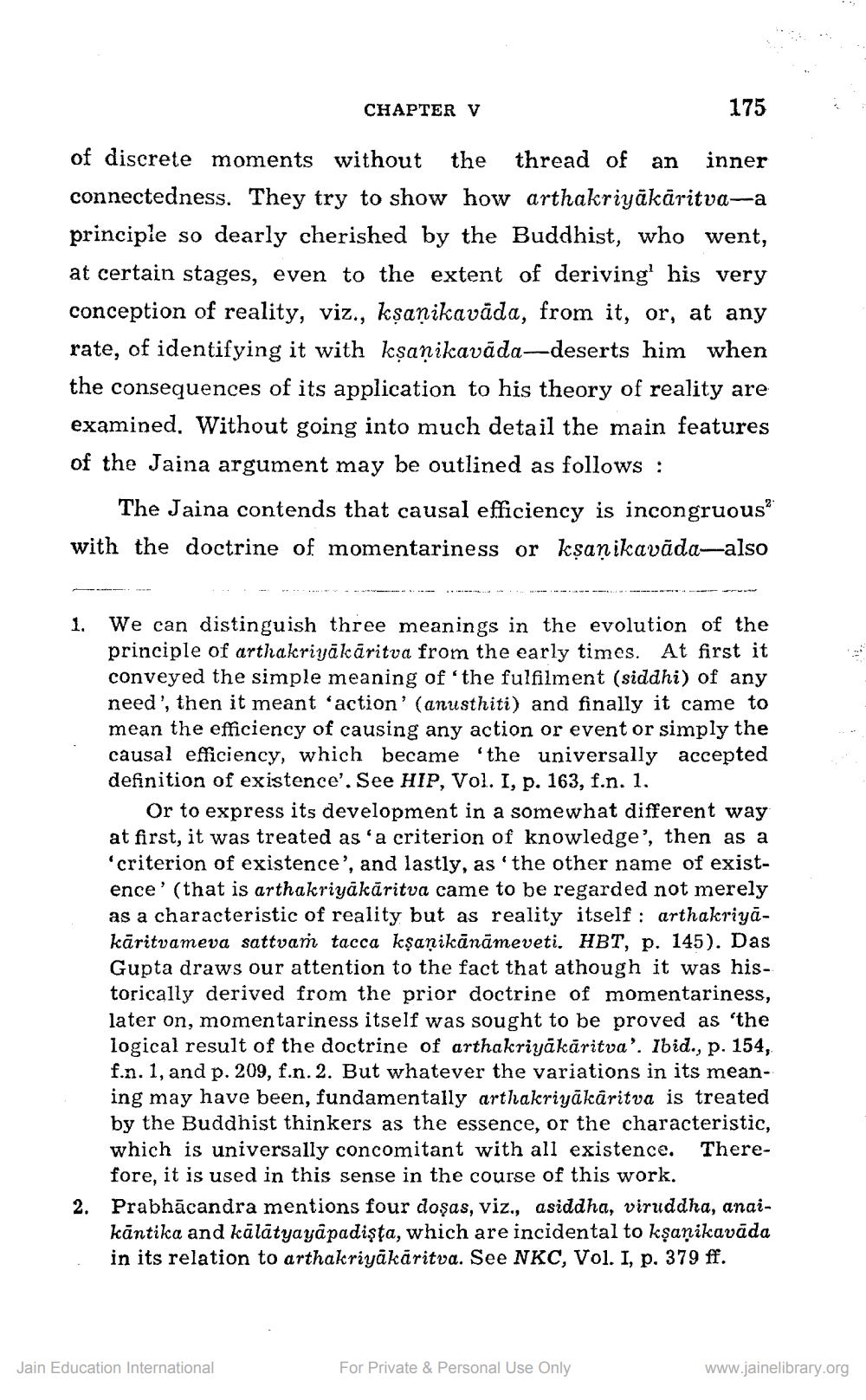________________
CHAPTER V
175
of discrete moments without the thread of an inner connectedness. They try to show how arthakriyäkäritva-a principle so dearly cherished by the Buddhist, who went, at certain stages, even to the extent of deriving' his very conception of reality, viz., kșanikavāda, from it, or, at any rate, of identifying it with kşaạikavāda—deserts him when the consequences of its application to his theory of reality are examined. Without going into much detail the main features of the Jaina argument may be outlined as follows :
The Jaina contends that causal efficiency is incongruous* with the doctrine of momentariness or kşaņikavāda–also
We can distinguish three meanings in the evolution of the principle of arthakriyālāritva from the early times. At first it conveyed the simple meaning of the fulfilment (siddhi) of any need', then it meant 'action' (anusthiti) and finally it came to mean the efficiency of causing any action or event or simply the causal efficiency, which became the universally accepted definition of existence'. See HIP, Vol. I, p. 163, f.n. 1.
Or to express its development in a somewhat different way at first, it was treated as a criterion of knowledge', then as a 'criterion of existence', and lastly, as 'the other name of existence' (that is arthakriyākāritva came to be regarded not merely as a characteristic of reality but as reality itself: arthakriyakāritvameva sattvam tacca kşanikānāmeveti, HBT, p. 145). Das Gupta draws our attention to the fact that athough it was historically derived from the prior doctrine of momentariness, later on, momentariness itself was sought to be proved as 'the logical result of the doctrine of arthakriyākäritva'. Ibid., p. 154, f.n. 1, and p. 209, f.n.2. But whatever the variations in its meaning may have been, fundamentally arthakriyäkäritva is treated by the Buddhist thinkers as the essence, or the characteristic, which is universally concomitant with all existence. There
fore, it is used in this sense in the course of this work. 2. Prabhācandra mentions four doşas, viz., asiddha, viruddha, anai
kāntika and kālātyayapadişta, which are incidental to kşanikavāda in its relation to arthakriyākāritva. See NKC, Vol. I, p. 379 ff.
Jain Education International
For Private & Personal Use Only
www.jainelibrary.org




